I've been waiting for Lenovo's Flex 5G for a long time. It was first teased in May 2019 as the world's first 5G PC, only called Project Limitless. Then it was formally announced at CES this year as the Yoga 5G, and came to the U.S. as the Flex 5G.
I'm a big fan of Windows on ARM, and I've reviewed almost every Snapdragon PC that's existed, even the China-exclusive Huawei MateBook E. That's why I was excited that Qualcomm introduced the Snapdragon 8cx a year and a half ago, promising an extreme chipset that's built from the ground up for PCs. The Flex 5G is the third PC to use the new chipset, and might be the best depending on the form factor you prefer.
But this thing is all about 5G, and you're paying for it. Let's start with a little exercise. Ask yourself how much you'd pay for a laptop that has 8GB RAM, 256GB of internal storage, and a 14-inch screen. For the processor, think along the lines of maybe an Intel Core i5-8200Y (I'll explain that later). Once you have that number, subtract it from $1,499 (the price of the Flex 5G), and what you're left with is what we'll be referring to as the 5G tax, or even as the mmWave tax.
Specs
| CPU | Qualcomm Snapdragon 8cx 5G Compute Platform |
|---|---|
| GPU | Adreno 680 |
| Display | 14” FHD (1920 x 1080) IPS Touchscreen, 400 nits |
| Body | 321.4x215x14.7mm (12.65x8.46x0.58in), 1.35kg (2.97lbs) |
| Memory | 8GB LPDDR4X |
| Storage | 256GB UFS |
| Ports | (2) USB 3.1 en 1 Type-C (1) 3.5mm audio (1) Nano-SIM |
| WLAN and Bluetooth | 5G mmWave, Bluetooth 5.0 |
| Audio | User-facing stereo speakers optimized with Dolby Atmos |
| Battery | 4-cell 60 Wh Li-Polymer |
| Material | Aluminum and magnesium |
| Color | Iron Grey |
| OS | Windows 10 Pro |
| Price | $1,499.99 |
By the way, you didn't read that wrong. This device ships with Windows 10 Pro, which is totally unexpected. Most consumer PCs come with Windows 10 Home, even if consumers are spending thousands of dollars on the device.
Day one
5G
I want to start out talking about 5G because like I said earlier, it feels like that's what this is all about. To be clear, this is not the only 5G PC that's been announced, although it's the only one on the market. The others have Intel CPUs, but still have Qualcomm modems, and they only support sub6 5G.
What makes the Flex 5G special is that it supports both sub6 and mmWave, something that's even rare in phones. Indeed, if you get a phone from anyone other than Verizon, the only ones that support it are the Samsung Galaxy S20+ and Galaxy S20 Ultra. Verizon actually has special phones built that have both, and the Flex 5G is a Verizon exclusive.

At this point, you'll want to ask yourself how often you use a laptop outdoors and if multi-gigabit speeds are worth the price.
Well, actually, that's not true, but it's marketed as such. It's available from Lenovo.com and it actually supports all 5G bands that are in use by U.S. carriers, but all documentation will only show it as being supported by Verizon.
The point is that devices that support both sub6 and mmWave 5G are expensive, and that's where the $1,499 price tag comes from. Verizon's 5G network is mmWave-only right now, and it's launching a sub6 5G network later this year, so all of its devices have to support both. Every other carrier started off with sub6, and you can use the Flex 5G on those networks, but this is a lot of money to pay for sub6 5G.
Here's the problem though. Millimeter waves only work if you have a direct line of sight to an antenna. They can be blocked by a window, a piece of paper, or literally anything besides air. In other words, mmWave only works outdoors, in a select few spots. At this point, you'll want to ask yourself how often you use a laptop outdoors and if multi-gigabit speeds are worth the price.
I did do some speed testing and I took the train out to Manhattan to do it, and I ended up getting speeds of just under one gigabit-per-second. Obviously, that's phenomenal, and if you find the right spot, you can easily get it over 2Gbps. I didn't try that hard because frankly, it was a bright sunny day and was wondering why, with all of the work I had to do to get these speeds, anyone else would do the same.
Don't get me wrong; cellular connectivity is amazing in a laptop. I can't express how awesome it is to not have to think about setting my phone up as a hot spot or connecting to public Wi-Fi. But I'd much rather have this support either sub6 5G or even just 4G LTE and cost $999.
It's worth noting, of course, that you're future-proofing yourself a bit by having support for the full 5G stack. Presumably, this will all be built out a lot within the next few years.
Design
The Flex 5G is the successor to the Yoga C630 WOS, which included a Snapdragon 850. In fact, Lenovo is the only OEM that's been on-board for all three generations of Windows on Snapdragon. In fact, it has a lot of similarities to the Yoga C630, such as its Iron Grey chassis. When this was first announced, I had to take a closer look at the spec sheet to spot the differences.

Like all Flex PCs, there's no visible branding aside from the Lenovo logo. In the rest of the world, you'll surely see Yoga branding. It's a shame, as branding is often the prettiest part of the device, and with the gray color, it feels a bit bland.
It's also over half an inch thick and weighs in at 2.97 pounds. You can compare that to the Samsung Galaxy Book S, which came in at 0.46 inches and 2.12 pounds. I praised the Galaxy Book S because making something that thin and light really showcased what can be done with a Snapdragon chipset. Unfortunately, the Flex 5G is no thinner or lighter than your standard ultrabook. It does make up for that in battery life though, and we'll go over that in a bit.
What's awesome though is that this is a convertible, meaning that you can use it as a tablet or in different form factors. Between this and the other two Snapdragon 8cx PCs (the Galaxy Book S and Microsoft Surface Pro X), this is the only one that comes in this particular form factor. It's also my favorite form factor, and I find it to be the most versatile.

As far as ports go, there aren't many. On the right side, there are just two USB 3.1 Gen 1 Type-C ports. Thunderbolt 3 is an Intel thing, and adding it would add even more cost to the device, so it's no surprise that it's not here. Of course, USB 3.1 Gen 2 would have had 10Gbps instead of 5Gbps, but it's not a big deal. They support display output, so you can easily connect to exterior monitors and such.

On the other side, there's a power button, a 3.5mm audio jack, and a physical switch for turning airplane mode on and off. Honestly, I've never seen a physical airplane mode switch before, and I have no idea why it exists. Cutting off all connectivity isn't something that's really done enough to merit a physical switch. I'd rather have a volume rocker, especially since this can be used as a tablet.
Display and audio
The Flex 5G packs a 14-inch 16:9 FHD display, so it's a bit bigger than the 13.3-inch screen on the Yoga C630. That makes it one of the biggest displays in a Snapdragon 8cx PC, a very close second to the 13-inch 3:2 screen on the Surface Pro X. It's also much brighter than the C630 was, offering 400-nit brightness.

This is a big deal to me. I often comment on the ability to work outdoors, because I work from home That's a typical cost-cutting measure for mid-range convertibles, and it's indicative of the real issue with this PC. It's a mid-range laptop, but it's priced as a flagship.
and I like to get out of the house occasionally and work elsewhere. That's especially important with a cellular laptop. If I can't use it outside in bright sunlight, what's the point? While it's still a glossy panel, it's at least much brighter.
And as I mentioned earlier, Verizon's 5G currently only works outdoors, so if you're going to be taking advantage of 5G, you'll want to be able to do it in a park or something.
The Flex 5G also has some narrow bezels, also including Lenovo's reverse notch at the top, which serves as a tab to make it easier to open. That notch also includes a webcam and an IR camera for facial recognition, something that's somewhat rare on an ARM PC.
Also, the screen does support pen input, but the pen doesn't come in the box. That's a typical cost-cutting measure for mid-range convertibles, and it's indicative of the real issue with this PC. It's a mid-range laptop, but it's priced as a flagship.

Audio quality is pretty solid too, as Lenovo has Dolby Atmos speakers on either side of the keyboard. They're not terrifically loud, but they do get the job done. I'm more impressed with the rich sound and clarity that I've grown to expect from Dolby Atmos.
Keyboard and trackpad
The keyboard on the Flex 5G is excellent, but you have to be happy with a shallow keyboard. It's interesting, because this was the exact same case with the Samsung Galaxy Book S. Lenovo makes great keyboards, so you can bet that it's comfortable and it's quiet. In fact, it's a lot quieter than most consumer laptops that I've used.

As for accuracy, it's not perfect. There is the occasional missed key stroke, particularly with the space bar for some reason. Overall, I'm quite happy with it, and again, I really love how quiet it is.

The trackpad uses Microsoft Precision drivers, so that part of it is fine. In fact, my only criticism of it is that it doesn't quite take advantage of the available real estate. It's not that it's small or anything; it's just that it could be bigger if Lenovo wanted it to be.

Also found on the keyboard deck is a fingerprint sensor, which is pretty much a staple on Lenovo PCs. If you don't like using facial recognition, you do have options.
Performance, battery life, and Windows on ARM
If you're unfamiliar with Windows on ARM, here are the key things that you need to know: it runs native 64-bit and 32-bit ARM apps and emulated x86 apps. What it does not support at all are x64 apps, although that should be coming.
Using mmWave organically in a real-world setting isn't realistic.
Things like Office, Microsoft's Edge browser, and Firefox run natively, and most apps can run through emulation. I'd recommend using a native browser, since browsers are harder to cache. Unfortunately, you can't run some of the Adobe CC apps like Premiere Pro. There's a 32-bit Photoshop that you can run, although it doesn't run particularly well because the OpenGL libraries being used aren't great.
You can think of the Snapdragon 8cx like you would an Intel Y-series processor. In fact, running native apps like Edge, the Snapdragon 8cx is easily faster than a Core i7-8500Y. And of course, you wouldn't try to edit video on a Y-series processor. The big problem is that with how thick and heavy this laptop is, the chassis is more fit for a U-series processor.

It does have a 60Wh battery though, which might be the biggest I've seen on a Windows on ARM PC. I've noted several times that one of the benefits of Windows on ARM is battery life, but these PCs are meant to be so thin and light that they ship with tiny batteries. The Flex 5G can easily get a solid 12 hours of battery life with normal usage being working through Edge Chromium.
That's a claim that I've never made for any other PC. It gets a legit 12 hours, and it's pretty wild. You might find that mmWave 5G affects the battery, as it tends to do that. Luckily, using mmWave organically in a real-world setting isn't realistic.
I ran some benchmarks this time. I don't typically do that for ARM PCs, as I like to focus more on the experience of the device, but I figured it's time to start keeping score with Geekbench 5, which runs natively.
| Lenovo Miix 630 | Huawei MateBook E | Samsung Galaxy Book S | Microsoft Surface Pro X | Lenovo Flex 5G | |
|---|---|---|---|---|---|
| Chipset | Snapdragon 835 | Snapdragon 850 | Snapdragon 8cx | Microsoft SQ1 | Snapdragon 8cx 5G |
| Single-core | 378 | 494 | 726 | 766 | 716 |
| Multi-core | 1,553 | 2,095 | 2,909 | 2,946 | 2,793 |
Obviously, Microsoft's Surface Pro X comes out on top in benchmarks. It uses a modified version of the Snapdragon 8cx that has a higher clock speed on the CPU and GPU.
Conclusion
Let me tell you about the Lenovo's flagship confumer laptop, the Yoga C940 14. It has a pen garage built into it, and the hinge is made out of a Dolby Atmos sound bar for the best laptop audio around. The screen supports Dolby Vision, and it's an all-around amazing PC.
For $300 less than the price of the Flex 5G (when it's not on sale for even $190 less than that), you can get a Yoga C940 with an Intel Core i5-1035G4 (that's one of the ones with Iris Plus Graphics), 8GB RAM, a 256GB SSD, and a 14-inch 1080p display.

Here's the deal with the Flex 5G. You have to really want 5G, and you have to be willing to pay a serious premium to get it. Keep in mind that Verizon is launching sub6 5G later this year, so this thing will come in handy eventually.
All-in-all, this is a really great PC, with a pretty 1080p display, a nice and quiet keyboard, and cellular connectivity. It's just a mid-range laptop with flagship pricing, and that couldn't be more evident than by the fact that it doesn't ship with a pen, or that you can't configure it with more than 8GB RAM. I love Windows on ARM PCs for a lot of reasons, so it pains me to say this, but I really don't feel like I can recommend the Flex 5G.
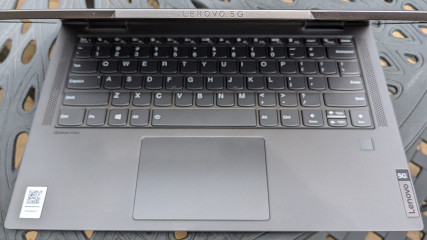


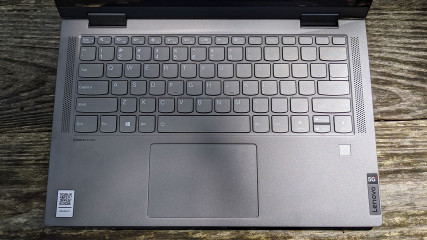

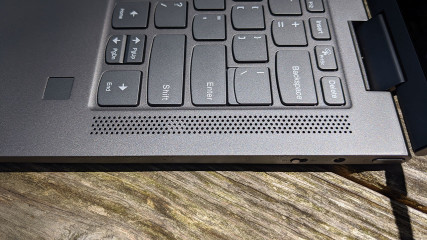
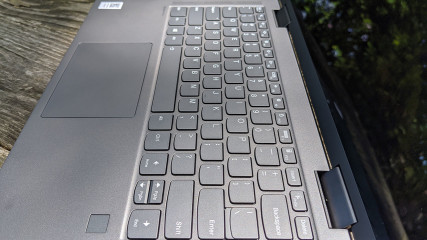
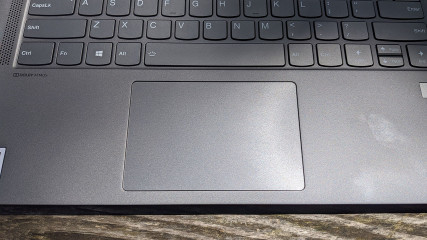
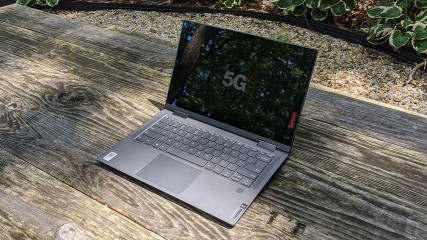
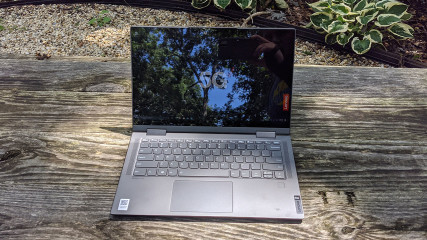
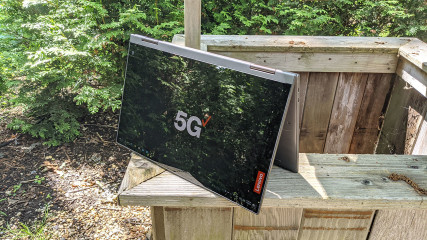
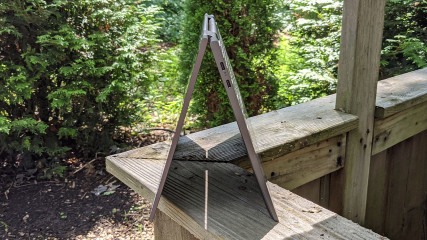


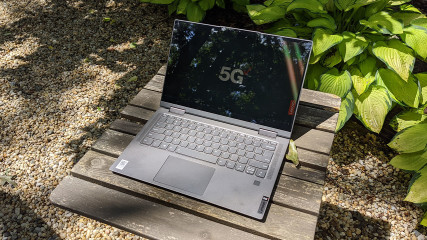
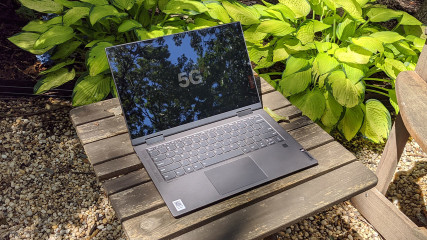









10 Comments - Add comment